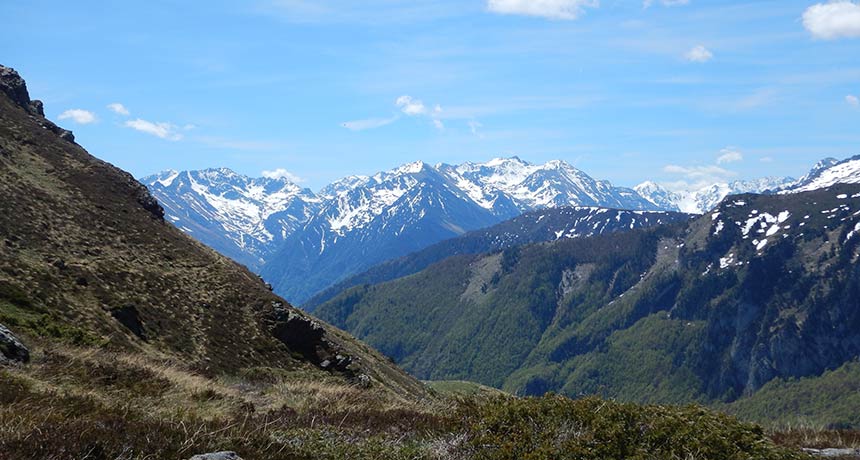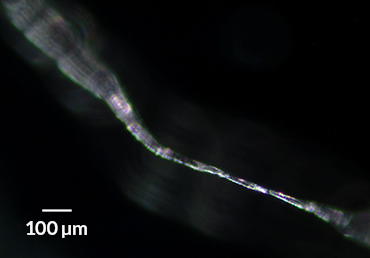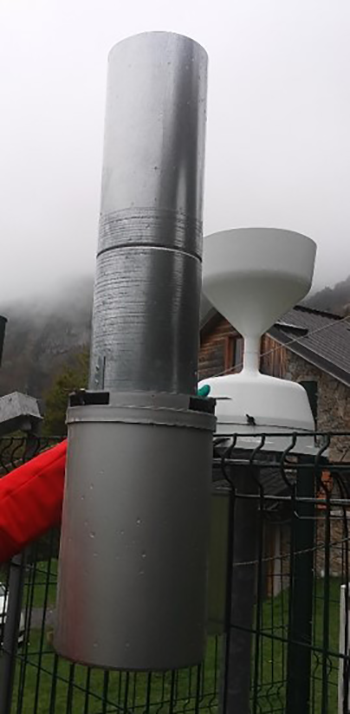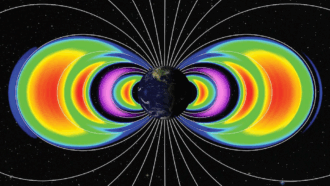Microplastics are blowing in the wind
A remote spot in the French Pyrenees is getting as many microplastics per day as downtown Paris

This part of the Pyrenees mountains in Europe looks remote and clean. But tiny bits of plastic fall here every day, scientists are finding.
G. Le Roux
Share this:
- Share via email (Opens in new window) Email
- Click to share on Facebook (Opens in new window) Facebook
- Click to share on X (Opens in new window) X
- Click to share on Pinterest (Opens in new window) Pinterest
- Click to share on Reddit (Opens in new window) Reddit
- Share to Google Classroom (Opens in new window) Google Classroom
- Click to print (Opens in new window) Print
Plastic pollution from cities doesn’t always stay in cities. Tiny bits can migrate on the wind, a new study finds. This trash can end up on a remote mountain at least 95 kilometers (59 miles) away. It’s the first proof that microplastics — tiny bits of plastic trash 5 millimeters (0.2 inch) or smaller — are traveling long distances by air.

And we’re not talking about just a little plastic. The new findings suggest the rain of plastic bits in remote places may rival that in some large cities.
Researchers from EcoLab in Castanet-Tolosan, France, wanted to know if microplastics tend to travel on the winds. To find out, they set up two types of large containers. Each collected microplastics falling out of the air at the Bernadouze weather station. It sits in the Pyrenees Mountains between France and Spain. Scientists visited the site roughly once a month for five months. Each time, they took out all the particles that had fallen from the sky. Then they separated out the plastic bits, identified them by type and tallied the totals.
And they found plenty.
An average of 365 microplastic particles per square meter (10.7 square feet) per day landed at the site. This means that plastic lands high in the mountains at a rate “similar to what’s happening in Paris,” says Deonie Allen. She’s an atmospheric and environmental scientist at EcoLab. Her group shared its findings April 15 in Nature Geoscience.
The mountain fallout is somewhat different
The mountaintop may have been getting as many plastic bits as Paris. But the size and types of those bits was not the same. Previous studies had looked at plastics falling from the air in Paris and Dongguan, China. In both cities, most particles were slender fibers larger than about 100 micrometers. That’s a little thicker than a human hair. The fibers were made of the plastics polypropylene (Pah-lee-PRO-puh-leen) or polyethylene terephthalate (Pah-lee-ETH-eh-leen Tair-eh-THAAL-ayt), also known as PET. Clothing and other fabrics often shed these fibers.

At the mountain site, most plastic bits were smaller than 25 micrometers. This plastic pollution wasn’t from fabric. Instead, it consisted mostly of polystyrene and polyethylene. These plastics are found in many packing materials. Polystyrene, for example, is commonly known as Styrofoam.
Polystyrene can be degraded by weather. It also can be broken down by ultraviolet waves from the sun — waves invisible to the human eye. The resulting small bits can easily be carried on the wind, the researchers say. Winds and brief bursts of intense rain or snow were linked, in fact, with more of these plastics raining down on the mountain.
The study couldn’t definitely identify the source of the plastics. Instead the scientists used a computer program. They modeled where the wind was coming from and how fast it was blowing when they collected the trash. The plastics traveled at least 95 kilometers (59 miles) to reach the site, the computer model showed. In fact, Allen says, it’s likely that the plastics came from farther away than that. He points out that there are no big cities within 95 kilometers that would have shed those plastic bits.
The study confirms that microplastics are everywhere in the environment, says Johnny Gaspéri. He’s an environmental scientist at the Université Paris-Est Créteil. He was not involved in the study.
So far, the scientists have studied only one mountain site. They want to collect more samples from other remote locations. “It’s not just local pollution, or something only happening in cities,” says study coauthor Steve Allen. He is an atmospheric and environmental scientist at EcoLab. Plastic isn’t staying where people put it. “Invisible pollution is transporting its way around the world.”







